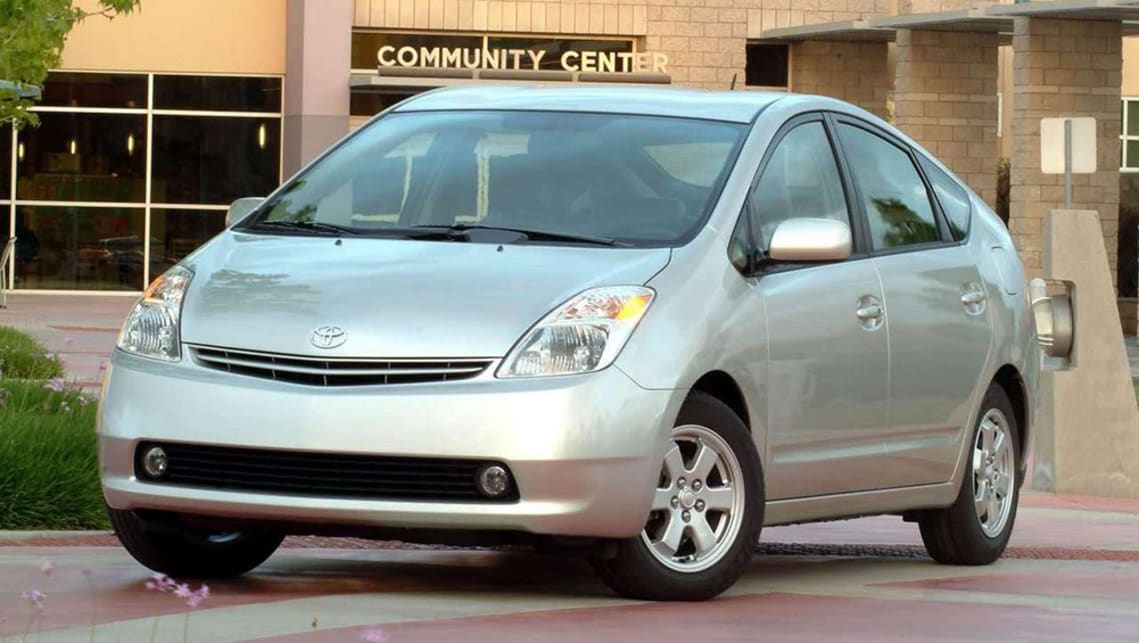
Toyota Prius 2003 Review
- Toyota Prius
- Toyota Prius 2003
- Toyota Prius Reviews
- Toyota Reviews
- Toyota Hatchback Range
- Hatchback
- Toyota
- EV
- Green Cars

Newsflash. It didn't happen.
The Prius was too costly, complicated and threatening – and too much of a stretch for people who are happy to not use plastic bags to help the environment, but won't pay $40,000 for a green-power white elephant.
The eco-friendly brigade were also a Honda target for the futuristic-looking Insight, which was even less practical and enjoyable than the Prius. Another loser.
But times change. Hybrid cars, too. And the Prius.
Toyota went back to basics with the petrol-electric concept and came up with a Prius II that makes far more sense.
It could appeal to ordinary Australians intrigued by the idea of a hybrid car, wanting to do something for the environment, and who like a vehicle that's running ahead of the pack.
The basics are simple: It has a small-capacity petrol engine and a battery-powered electric "booster" motor for acceleration.
The new Prius is said to match the performance of a 2.4-litre Camry, getting to 100km/h in 11 seconds, with overall fuel consumption that's around half the family car's.
The hatchback has much more space inside, a Star Wars-style dashboard that includes an instant readout of the hybrid system, and a price of $36,990 – a $3000 cut – to lift showroom appeal.
The car now seats five adults and the drag co-efficient has been slashed to an impressive 0.26, against the 0.30-0.32 of most production cars.
The value is even better, thanks to everything from electric aircon and steering to cruise control and satellite navigation.
Toyota is trumpeting a customer benefit that adds up to about $5000, making an $8000 overall increase in value.
The new deal already looks to be working, at least compared with the original Prius.
That car was really only a novelty for government departments and educational groups, and it's reflected in tiny sales – 200 cars in two years – and rock-bottom resale prices.
But the new Prius is going pretty well in showrooms, with sales of 91 cars in November, compared with 16 for the same month in 2002 with the old model.
The Prius will face a new challenge soon when Honda introduces its own second-generation hybrid, a petrol-electric Civic that makes far more sense than the quirky Insight.
But for now, its biggest battle is to convince ordinary Australians, not just the greenies, that hybrid power is sensible and cost-effective.
On the road
Our first drive in the Prius II was a 15-minute cruise around Taren Point, up the road from Toyota Australia's Sydney base.
First impressions? It was surprisingly brisk, very roomy, and had styling that helps to emphasise its breakthrough hybrid drive.
It didn't make the sort of noises we expect for a car so brisk, with a very subdued engine note, but it did the job.
When Toyota launched the car, it trumpeted its radical self-parking system, not yet approved for Australia. And it used Dr Karl Kruszelnicki, the ABC's resident egghead and the man who warns about the dangers of a ¿micro-sleep¿ on the road, to explain the technology.
But it was still the car that starred, and we were keen to get one home.
Now, after a week with the Prius, we are fans. There are still some bugs, but this Prius is the first hybrid we'd be happy to recommend.
The bugs The power steering feels odd, with not enough feedback in corners and a generally woolly' feeling that the suspension angles are wrong.
The battery pack means the boot is fairly shallow.
And the work on cutting drag and noise means the Prius is extremely quiet – unless a Kenworth truck rattles past your ear, when it can sound as if it's coming in through the door.
Still, it's a massive leap forward from the original Prius.
That car, to our thinking, was an over-complicated Corolla with a $40,000 price tag, a compromised cabin and boot, and not enough bells and whistles to lure people who rush to have anything new.
We don't claim to fully understand the new Prius, except to know it has a baby engine that gets more than enough extra oomph from its battery pack when you want it.
It also uses far less petrol and its tailpipe emissions are among the cleanest in the business.
What we wanted to know was how it drives.
The answer is that it drives pretty well. It gets along surprisingly swiftly, has good overtaking power and strong brakes, and is very, very quiet at all times and all speeds – unless you are rattled by a Kenworth.
The only shortcoming is the suspension, which feels under-damped and has settings that would be better in Japan.
We've come to expect a firm but compliant ride on local Toyotas, but the Prius is a generation behind.
We were also captivated by the roomy cabin, comfy seats, all the standard equipment and a design inside and out that's a bit edgy.
The overall shape of the five-door hatch is trendy but not extreme, while the cabin treatment has a funky central display for the hybrid system, satnav, aircon and entertainment.
There's a sporty-ish wheel, plenty of storage space and new plastic trims that look more advanced than your average family Toyota.
We also liked the way the hybrid drive works so well but gives no real signs of its operation.
You can get easily distracted by the dashboard display, which has flashing arrows and revolving wheels and all sorts of colours.
Still, we think it's a winner and want to get a car for a longer-term look at what's emerging as the future of motoring.
$3,080 - $4,730
Based on third party pricing data
$3,080 - $4,730
Based on third party pricing data







